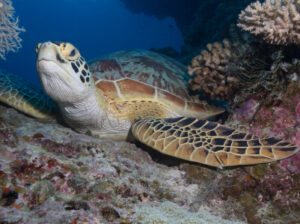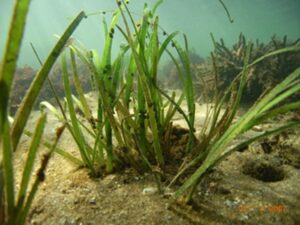Resources
By Amy Nelson
Selected publications by Joy B. Zedler
 Handbook for Restoring Tidal Wetlands
Handbook for Restoring Tidal Wetlands
The Ecology of Tijuana Estuary: An Estuarine Profile (Biological Report, Nos. 85-7.5 (June, 1986)) by Joy B. Zedler and Christopher S. Nordby and Christopher S. Nordby
Zedler, J. B., C.L. Bonin, D.J. Larkin, A. Varty. 2014. Ecology of Salt Marshes. Reference Module in Earth Systems and Environmental Sciences, from Encyclopedia of Ecology 2008, Pages 3132- 3141.
Zedler, J.B., and N. Miller. In press. Wetland restoration at the landscape scale. In B. A. Middleton and G. R. Gutenspergen, editors, Concepts in Landscape Ecology Section, Society of Wetland Scientists Encyclopedia of Wetlands.
Zedler, J. B. 2012. Chapter 1. Introduction: diverse perspectives on tidal marshes. Pp. 1-17 In A. Palaima, ed., Ecology, Conservation, and Restoration of Tidal Marshes: The San Francisco Estuary. University of California Press, Berkeley.
Zedler, J. B., J. M. Doherty and N. A. Miller. 2012. Shifting restoration policy to address landscape change, novel ecosystems, and monitoring. Ecology and Society 17 (4): 36.
Zedler, J. B. 2007. Success: An unclear, subjective descriptor of restoration outcomes. Ecological Restoration 25:162-168.
Selected publications by Roy “Robin” Lewis
 Lewis, RR. 2009. 2009. Knowledge overload, wisdom underload. Ecological Engineering. 35:341-342.
Lewis, RR. 2009. 2009. Knowledge overload, wisdom underload. Ecological Engineering. 35:341-342.
Lewis, RR. 2009. Mangrove field of dreams: if we build it, will they come? SWS Research Brief. 4 pages.
Lewis, RR. 2009. Methods and criteria for successful mangrove forest restoration. Chapter 28, pages 787-800 in GME Perillo, E Wolanski, DR Cahoon, and MM Brinson (eds.) Coastal Wetlands: An Integrated Ecosystem Approach. Elsevier Press.
Wetland Restoration: Contemporary Issues & Lessons Learned (draft white paper), Association of State Wetlands Managers
Selected publications by Peter Edwards & Ariana Sutton-Grier
P.E.T. Edwards, A.E. Sutton-Grier, G.E. Coyle Investing in nature: Restoring coastal habitat blue infrastructure and green job creation. 2013. Marine Policy 38:65-71.
P.A. Sandifer, A.E. Sutton-Grier Connecting stressors, ocean ecosystem services, and human health. Nat. Resour. Forum, 38 (2014), pp. 157–167
A.E. Sutton-Grier, K. Wowk, H. Bamford Future of our coasts: The potential for natural and hybrid infrastructure to enhance the resilience of our coastal communities, economies and ecosystems. Environmental Science and Policy (August 2015) pp. 137-148
Other publications
 Building Resilient Coastal Communities Using the Partnership Approach. U.S. Climate Resilience Toolkit, NOAA Digital Coast, The Nature Conservancy, and Great Lakes Coastal Resilience Planning Guide. Fact Sheet. (2015). –
Building Resilient Coastal Communities Using the Partnership Approach. U.S. Climate Resilience Toolkit, NOAA Digital Coast, The Nature Conservancy, and Great Lakes Coastal Resilience Planning Guide. Fact Sheet. (2015). –
Coasts at Risk: An Assessment of Coastal Risks and the Role of Environmental Solutions. Edited by Michael W. Beck. A joint publication of United Nations University – Institute for Environment and Human Security (UNU-EHS), The Nature Conservancy (TNC) and the Coastal Resources Center (CRC) at the University of Rhode Island Graduate School of Oceanography. (2014).
Coastal habitats and risk reduction: World Risk Report. Beck, M. W., C. Shepard. (2012).
The Economic and Market Value of Coasts and Estuaries: What’s at Stake
Investing in Nature: Creating Jobs and Restoring Coastal Habitats (NOAA, The Nature Conservancy)
Hope for Coastal Habitats (Restore America’s Estuaries)
 Integrating climate and ocean change vulnerability into conservation planning. Mcleod, E., A. Green, E. Game, K. Anthony, J. Cinner, S. Heron, J. Kleypas, C. Lovelock, J.M. Pandolfi, R.L. Pressey, R. Salm, S. Schill, and C. Woodroffe. Coastal Management. (2012)
Integrating climate and ocean change vulnerability into conservation planning. Mcleod, E., A. Green, E. Game, K. Anthony, J. Cinner, S. Heron, J. Kleypas, C. Lovelock, J.M. Pandolfi, R.L. Pressey, R. Salm, S. Schill, and C. Woodroffe. Coastal Management. (2012)
The Last Beach by Orrin H. Pilkey and J. Andrew G. Cooper
Mitsch, W.J. and J.G. Gosselink. 2015. Wetlands, 5th ed. John Wiley & Sons, Inc., Hoboken, NJ. 744 pp
*Note: Island Press is beginning its Free Summer Read promotion on June 29 with Kennedy Warne’s Let Them Eat Shrimp. Check it out!
 Web Sites
Web Sites
Association of State Wetland Managers
Coastal Conservation Association
Coastal Resilience, a global network of practitioners who are applying an approach and web-based mapping tool designed to help communities understand their vulnerability from coastal hazards, reduce their risk and determine the value of nature-based solutions.
The Convention on Wetlands of International Importance (RAMSAR)
Cooperative Institute for Marine and Atmospheric Studies
Ecological Restoration and Management, Inc.
Global Mangrove Database and Information System
International Society for Reef Studies
International Society for Mangrove Ecosystems
MarineBio, Habitat Conservation
National Centers for Coastal Ocean Science

The Nature Conservancy Oceans and Coasts
NOAA Coral Reef Conservation Program
NOAA Habitat Restoration Atlas
Pacific Estuarine Research Laboratory

Scripps Institution of Oceanography
Society for Ecological Restoration
Society for Wetland Scientists
Tijuana River National Estuarine Research Reserve
U.S. EPA Oceans, Coasts, Estuaries & Beaches
The Zedler Lab at the University of Wisconsin-Madison
Selected publications by Joy B. Zedler
 Handbook for Restoring Tidal Wetlands
Handbook for Restoring Tidal Wetlands
The Ecology of Tijuana Estuary: An Estuarine Profile (Biological Report, Nos. 85-7.5 (June, 1986)) by Joy B. Zedler and Christopher S. Nordby and Christopher S. Nordby
Zedler, J. B., C.L. Bonin, D.J. Larkin, A. Varty. 2014. Ecology of Salt Marshes. Reference Module in Earth Systems and Environmental Sciences, from Encyclopedia of Ecology 2008, Pages 3132- 3141.
Zedler, J.B., and N. Miller. In press. Wetland restoration at the landscape scale. In B. A. Middleton and G. R. Gutenspergen, editors, Concepts in Landscape Ecology Section, Society of Wetland Scientists Encyclopedia of Wetlands.
Zedler, J. B. 2012. Chapter 1. Introduction: diverse perspectives on tidal marshes. Pp. 1-17 In A. Palaima, ed., Ecology, Conservation, and Restoration of Tidal Marshes: The San Francisco Estuary. University of California Press, Berkeley.
Zedler, J. B., J. M. Doherty and N. A. Miller. 2012. Shifting restoration policy to address landscape change, novel ecosystems, and monitoring. Ecology and Society 17 (4): 36.
Zedler, J. B. 2007. Success: An unclear, subjective descriptor of restoration outcomes. Ecological Restoration 25:162-168.
Selected publications by Roy “Robin” Lewis
Lewis, RR. 2009. 2009. Knowledge overload, wisdom underload. Ecological Engineering. 35:341-342.
Lewis, RR. 2009. Mangrove field of dreams: if we build it, will they come? SWS Research Brief. 4 pages.
Lewis, RR. 2009. Methods and criteria for successful mangrove forest restoration. Chapter 28, pages 787-800 in GME Perillo, E Wolanski, DR Cahoon, and MM Brinson (eds.) Coastal Wetlands: An Integrated Ecosystem Approach. Elsevier Press.
Wetland Restoration: Contemporary Issues & Lessons Learned (draft white paper), Association of State Wetlands Managers
Selected publications by Peter Edwards & Ariana Sutton-Grier
P.E.T. Edwards, A.E. Sutton-Grier, G.E. Coyle Investing in nature: Restoring coastal habitat blue infrastructure and green job creation. 2013. Marine Policy 38:65-71.
P.A. Sandifer, A.E. Sutton-Grier Connecting stressors, ocean ecosystem services, and human health.Nat. Resour. Forum, 38 (2014), pp. 157–167
A.E. Sutton-Grier, K. Wowk, H. Bamford Future of our coasts: The potential for natural and hybrid infrastructure to enhance the resilience of our coastal communities, economies and ecosystems.Environmental Science and Policy (August 2015) pp. 137-148
Other publications
 Building Resilient Coastal Communities Using the Partnership Approach. U.S. Climate Resilience Toolkit, NOAA Digital Coast, The Nature Conservancy, and Great Lakes Coastal Resilience Planning Guide. Fact Sheet. (2015). –
Building Resilient Coastal Communities Using the Partnership Approach. U.S. Climate Resilience Toolkit, NOAA Digital Coast, The Nature Conservancy, and Great Lakes Coastal Resilience Planning Guide. Fact Sheet. (2015). –
Coasts at Risk: An Assessment of Coastal Risks and the Role of Environmental Solutions. Edited by Michael W. Beck. A joint publication of United Nations University – Institute for Environment and Human Security (UNU-EHS), The Nature Conservancy (TNC) and the Coastal Resources Center (CRC) at the University of Rhode Island Graduate School of Oceanography. (2014).
Coastal habitats and risk reduction: World Risk Report. Beck, M. W., C. Shepard. (2012).
The Economic and Market Value of Coasts and Estuaries: What’s at Stake
Investing in Nature: Creating Jobs and Restoring Coastal Habitats (NOAA, The Nature Conservancy)
Hope for Coastal Habitats (Restore America’s Estuaries)
 Integrating climate and ocean change vulnerability into conservation planning. Mcleod, E., A. Green, E. Game, K. Anthony, J. Cinner, S. Heron, J. Kleypas, C. Lovelock, J.M. Pandolfi, R.L. Pressey, R. Salm, S. Schill, and C. Woodroffe. Coastal Management. (2012)
Integrating climate and ocean change vulnerability into conservation planning. Mcleod, E., A. Green, E. Game, K. Anthony, J. Cinner, S. Heron, J. Kleypas, C. Lovelock, J.M. Pandolfi, R.L. Pressey, R. Salm, S. Schill, and C. Woodroffe. Coastal Management. (2012)
The Last Beach by Orrin H. Pilkey and J. Andrew G. Cooper
Mitsch, W.J. and J.G. Gosselink. 2015. Wetlands, 5th ed. John Wiley & Sons, Inc., Hoboken, NJ. 744 pp
*Note: Island Press is beginning its Free Summer Read promotion on June 29 with Kennedy Warne’s Let Them Eat Shrimp. Check it out!
Web Sites
Association of State Wetland Managers
Coastal Conservation Association
Coastal Resilience, a global network of practitioners who are applying an approach and web-based mapping tool designed to help communities understand their vulnerability from coastal hazards, reduce their risk and determine the value of nature-based solutions.
The Convention on Wetlands of International Importance (RAMSAR)
Cooperative Institute for Marine and Atmospheric Studies
Ecological Restoration and Management, Inc.
Global Mangrove Database and Information System
International Society for Reef Studies
International Society for Mangrove Ecosystems
MarineBio, Habitat Conservation
National Centers for Coastal Ocean Science
The Nature Conservancy Oceans and Coasts
NOAA Coral Reef Conservation Program
NOAA Habitat Restoration Atlas
Pacific Estuarine Research Laboratory
Scripps Institution of Oceanography
Society for Ecological Restoration
Society for Wetland Scientists
Tijuana River National Estuarine Research Reserve
 Coastal Conservation Network
Coastal Conservation Network Coral Reef Alliance
Coral Reef Alliance Pro Esteros
Pro Esteros